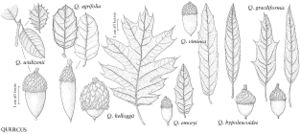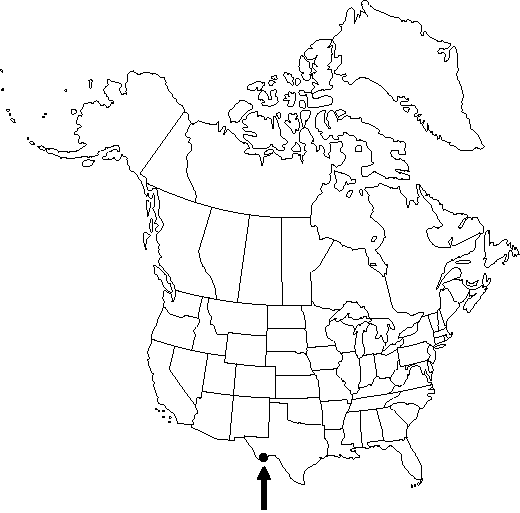Quercus graciliformis
Torreya 34: 120. 1934.
Trees, tardily deciduous, to 8 m. Bark gray, furrowed. Twigs straw colored to brown or deep reddish brown, 1-2 mm diam., glabrate or somewhat pubescent at apex. Terminal buds glossy brown or red-brown, ovoid, 1.5-3 mm, minutely ciliate. Leaves: petiole 10-20 mm, glabrous or glabrate. Leaf blade lanceolate to narrowly elliptic, widest proximal to middle, 45-90 × 10-25 mm, base rounded to cuneate, margins entire or with 8-10 teeth or shallow lobes with rounded sinuses, awns 1-9, apex acute to long-attenuate; surfaces abaxially glabrous or occasionally with small axillary tufts of tomentum, adaxially glabrous except for scattered pubescence near base and along midrib. Acorns biennial; cup saucer- to shallowly bowl-shaped, 4-6 mm high × 7-10 mm wide, covering 1/4-1/3 nut, outer surface puberulent to glabrate, inner surface uniformly pubescent, scales appressed, acute, occasionally tuberculate at base; nut ovoid to narrowly ellipsoid, 9-18 × 7-10 mm, minutely puberulent, scar diam. 3-4.5 mm.
Phenology: Flowering spring.
Habitat: Dry rocky canyons of the Chisos Mountains
Elevation: 0-1650 m
Discussion
Of conservation concern.
Quercus graciliformis reportedly hybridizes with Q. emoryi.
Selected References
None.

